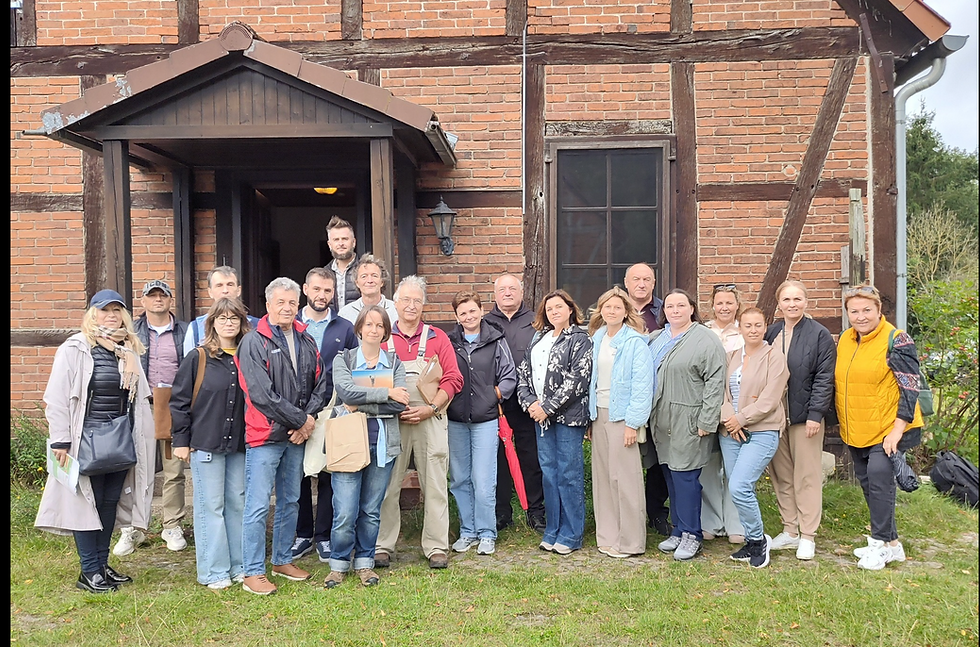New genetic engineering is negligent
- BiO ReporterIn

- Jun 3
- 3 min read
New genetic engineering without regulations is reckless! This has been demonstrated by an AI experiment on new genetic engineering conducted by three environmental protection organizations, which—in compliance with the EU's proposed NGT rules—developed the blueprint for a highly toxic corn plant in just a few days using free AI. This must be an eye-opener for the EU bodies currently negotiating the high-risk new release rules in the trilogue!

EU bodies are currently negotiating a relaxation of genetic engineering law. The EU Commission wants to pass a law that would allow the release of so-called NGT-1 plants into the environment without testing. This would effectively remove protection against genetic engineering in crops. Three environmental organizations are now showing just how risky this is. With the help of free AI, they developed the blueprint for a highly toxic corn plant in just a few days, complying with all NGT rules.
Practical test with ChatGPT
Benny Haerlin, coordinator of Save Our Seeds, sums it up: "This small practical test with ChatGPT reduces the EU Commission's negligent and scientifically untenable idea of basing its risk assessment on the number rather than the quality of genetic modifications to absurdity. Artificial intelligence makes its criteria look ridiculous at the first attempt. It's a good thing there's still time to pull the emergency brake."
EU proposals for NGT regulation are negligent and inadequate
According to a proposal by the EU Commission, plants produced using new genetic engineering techniques (NGT) that have undergone fewer than 20 genetic modifications and do not contain any foreign genetic material will be allowed to enter the market without environmental risk assessment or food labeling.
What politicians have ignored or failed to understand is that artificial intelligence (AI) can be used to develop dangerous NGT plants that comply with these rules very quickly and in a targeted manner. Furthermore, there is no reliable scientific evidence that NGT plants below this ‘magic threshold’ of 20 genetic modifications are safer than other genetically modified plants.
Poisonous plant quickly designed with AI in compliance with all regulations
A small proof-of-concept experiment shows that it is relatively easy and quick to design such a permitted yet highly dangerous plant using AI. The criteria proposed by the EU Commission served as a blueprint for circumventing mandatory risk assessment. The goal was to develop an insecticidal corn plant that complies with EU rules. In less than a week, ChatGPT was used to create the blueprint for an NGT-1 corn plant that permanently produces elevated levels of a protein that is potentially toxic to certain butterflies of the order Lepidoptera by disrupting their digestion. The animals would starve to death. This insect order includes, for example, the European corn borer (Ostrinia nubilalis), which is considered a pest in corn cultivation.
Not only target insects die
The problem with this, however, is that insecticidal plants not only decimate the desired pest species, but also pose serious risks to non-target organisms, food webs, ecosystem functions, and biodiversity. According to current EU legislative proposals, such plants could still be released and marketed as NGT-1 plants without prior environmental risk assessment.
The idea for the current experiment with its striking results came from the Aurelia Foundation. The Testbiotech association translated it into a plausible design example, and the SaveOur Seeds (SOS) initiative contributed further basic knowledge.
Laboratories around the world are working on combining artificial intelligence and genetic engineering. This will further accelerate the already dynamic technological development. It offers not only advantages but also risks that must also be considered. The insecticidal AI corn created here can be seen as a kind of experimental proof that the EU proposals for the future regulation of NGT plants are inadequate and already outdated before they could even come into force. The EU Commission's proposal should therefore be withdrawn.
Read more (in German)
Pressemeldung Aurelia Stiftung: https://www.aurelia-stiftung.de/2025/05/27/chatgpt-baut-insektengiftige-gentechnik-pflanze/
Pressemeldung Testbiotech: https://www.testbiotech.org/aktuelles/mit-chatgpt-zu-insektengiftigen-ngt-pflanzen/
Hintergrundbericht über das Experiment (27-05-2025): https://berufsimker.de/wp-content/uploads/2025/05/KI-Design-fuer-NGT-1-Pflanzen_Testbiotech.pdf
Source: 28.05.2025/Berufsimkerbund/Janine Fritsch
Copyright: „Deutscher Berufs- und Erwerbsimkerbund/Janine Fritsch“










Comments